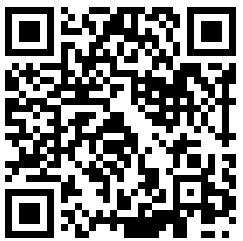بررسی ابزارهای رسانه ای در بهبود ادراک فضای معماری (نمونه موردی واقعیت مجازی )
چکیده:ابزارهای رسانه ای در عصر ارتباطات و اطلاعات عواملی هستند که از طریق آنها اطلاعات، مفاهیم و ایده ها به مخاطبان خاص و عام منتقل می شود.واقعیت مجازی به عنوان یکی از ابزارهای رسانه ای یک تکنولوژی نوین است که به کاربر امکان میدهد تا با یک محیط شبیهسازی رایانهای تعامل داشته باشد. مزایای آن در معماری عمدتا در کمک کردن در طراحی و مفاهیم و ایده ها بیان می شود .هدف اصلی این نوشتار تعامل بین افراد و سناریوهای طراحی فضای معماری در فضای غیر مادی به کمک ابزارهای رسانه ای مانند واقعیت مجازی است، تا به درک جامع از قصد و ایده طراح و بهبود ادراک فضا کمک کند. سوال اصلی اینجاست که واقعیت مجازی چگونه می تواند ادراک شخص را از فضای معماری افزایش دهد؟ روش تحقیق این تحقیق از نوع تحلیل محتوا است که در ابتدا با استفاده از منابع و اسناد کتابخانه ای به بررسی و تحلیل جزئیات و چارچوب های نظریه ادراک فضا و مولفه های آن پرداخته سپس این موارد در زمینة واقعیت مجازی سنجیده شد و در نتایج آن مشخص گردید تجربه در فضاي غیر مادی تجربهاي است ذهني و لذا ماهيت فضا در آن ادراكي است، ادراكي كه بدون حضور فيزيكي شخص و تنها به مدد ذهن او صورت ميگيرد. قرارگيري اذهان، مبادله افكار و تجارب عدم خطاهای ادراكي این فضا و كاربردهاي فراوان آن تفاوتي اساسي با تعاريف سنتي ادراک فضای معماري دارد.
واژگان کلیدی: فضای معماری، ادراک،ابزارهای رسانه ای،واقعیت مجازی
Investigating media tools to improve the perception of architectural space (virtual reality case study)
Abstract: Media tools in the age of communication and information are the factors through which information, concepts and ideas are transmitted to specific and general audiences. Virtual reality as one of the media tools is a new technology that allows the user to Interact with computer simulation environment. Its advantages in architecture are mainly expressed in helping to design and concepts and ideas. The main purpose of this article is the interaction between people and scenarios of designing architectural space in intangible space with the help of media tools such as virtual reality, to a comprehensive understanding of The intention and idea of the designer and help improve the perception of space. The main question is how virtual reality can increase a person's perception of architectural space? The research method of this research is content analysis. At first, using library resources and documents, the details and frameworks of the theory of space perception and its components were studied and analyzed. Then, these cases were measured in the field of virtual reality and its results were specified. Experience in immaterial space is a mental experience and therefore the nature of space in it is perceptual, a perception that takes place without the physical presence of a person and only with the help of his mind. The placement of minds, the exchange of thoughts and experiences, the lack of perceptual errors in this space and its many applications are fundamentally different from the traditional definitions of the perception of architectural space.
Keywords: Architectural space, perception, media tools, virtual reality


